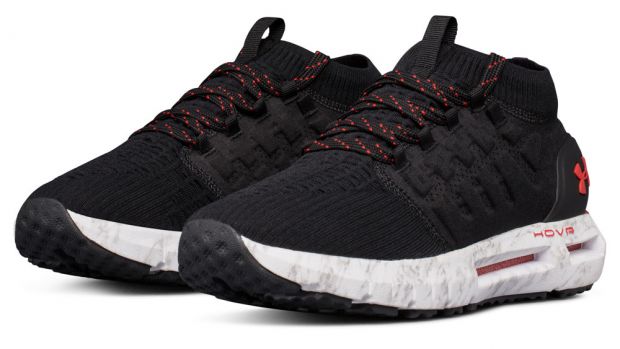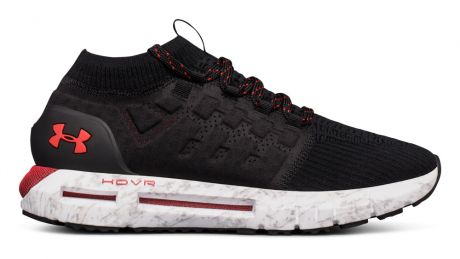You can trust Coach
Under Armour probably isn’t the first brand that comes to mind when looking to buy a pair of running shoes, but it has released some crackers in recent years, chiefly the under-appreciated Charged Bandit 2 (now available for just £56 on Amazon). In a bid to change this, UA has developed HOVR foam technology, which promises a “zero gravity feel” though its energy-returning responsiveness.
The HOVR cushioning can be found in two new shoes – the Phantom and the Sonic. The Phantom, the more cushioned of the pair, is designed for easier efforts and aimed at runners who value comfort above all, while the Sonic is slightly stiffer and more responsive, though still cushioned. Always a sucker for a luxurious running shoe, I opted to review the Phantom.
It’s important not to go overboard on how cushioned the Phantom is. It’s certainly comfortable – it can feel positively spongy when walking around and during very easy runs – but as you get faster, the shoe seems to become more responsive. It definitely runs lighter than its 300g weight.
I tried the Phantom for a few different runs and I was most surprised by how springy it felt when I put in a 5K race-pace mile during an interval session, especially because it then felt cushioned during the subsequent slow section of the run. So while I personally would opt for something lighter and faster for a full 5K, 10K or a even a half marathon at race pace, the Phantom is snappy enough to use in faster training runs and interval sessions, while also feeling plush and comfortable when you do slow the pace for long and easy runs.
I’d call the HOVR cushioning a success that matches up well to similar running shoe tech, like Adidas’s Boost or Saucony’s Everun. It’s comfortable and responsive, and will fulfil the needs of most, though keen runners will still want a lighter shoe for their faster efforts.
See related
- The Best Running Shoes
- The Best Stability Running Shoes For Overpronation
- The Best Trail Running Shoes For 2021

The upper on the HOVR Phantom is, however, less successful. Despite being half a size bigger than the running shoes I normally wear, the first pair of Phantoms I tried were tight in the forefoot, and during a 10K easy run rubbed enough to cause matching blisters on both feet. Make sure you get the right size is the lesson there – but even if you do, the ankle collar is still slightly tight and rubs against the back of your achilles tendon. I don’t mind a snug upper – in fact I enjoy the sock-like fit of shoes with knitted uppers from other brands – but the Phantom feels tight in all the wrong places. I’d recommend going a full size up on what you’d normally wear.
I also didn’t like the large flat laces, which seemed impossible to tie as tight as I’d like. They didn’t come undone during any runs, but I didn’t trust them.
There’s a hefty chunk of runner on the sole of the Phantom, which no doubt adds a little weight but should help it last a good long time. The knobbly texture on the sole is a little odd and makes the shoe slightly skittish on icy pavements, but it otherwise grips well and can also handle off-road paths – the kind you find in parks, not full-on muddy trails.
Under Armour’s HOVR technology is not a game-changer like Adidas’s Boost was when it was released, but the Phantom is a great all-round cushioned daily trainer that can handle some speedier stuff too. The upper won’t suit everyone, and getting the right size is crucial to avoid some uncomfortable rubbing, but the Phantom compares to the likes of the Ultra Boost as a shoe that can be worn for most runs while being stylish enough for the street as well.
£115, buy on underarmour.co.uk

Nick Harris-Fry is a journalist who has been covering health and fitness since 2015. Nick is an avid runner, covering 70-110km a week, which gives him ample opportunity to test a wide range of running shoes and running gear. He is also the chief tester for fitness trackers and running watches, treadmills and exercise bikes, and workout headphones.

